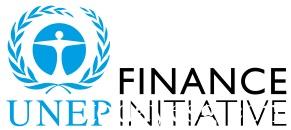Climate Target Setting Checklist for Banking Industry
The United Nations Environment Programme Finance Initiative (UNEP FI) releases climate target setting checklist for banking industry, aiming to provide climate action guidance for the global banking industry.
In March 2024, the Net Zero Banking Alliance released a new version of its climate goal setting guidelines, which use the latest data and methods to set carbon emission targets for the banking industry for 2030 and 2050. The climate target setting checklist released this time provides a more intuitive climate disclosure for banks based on this guideline.
Related Post: Net Zero Banking Alliance Releases New Guidelines for Climate Target Setting

Contents of Climate Target Setting Checklist for Banking Industry
The climate target setting checklist mainly includes the following contents:
- Emission baseline and annual emissions profile: Banks should establish emission baselines based on international and national greenhouse gas emission guidelines and disclose their carbon emissions from loans, investments, and capital market activities annually. The scope of carbon emissions should include most of Scope 1, Scope 2, and Scope 3, with a focus on some carbon intensive industries (such as agriculture, steel, cement, fossil energy, etc.). The indicators need to include absolute emissions, portfolio carbon emission intensity, and industry specific carbon emission intensity. Banks also need to disclose the scope and boundaries of their business activities, as well as the methods used to calculate carbon emissions data.
- Targets: Banks should establish mid-term (no later than 2030) and long-term (no later than 2050) climate targets based on science, which need to include absolute emissions and industry emission intensity. Banks need to disclose the scenarios on which their climate targets are based, as well as specific information such as baseline years, target years, and scenario methods. All information needs to comply with the Paris Agreement’s 1.5-degree Celsius warming target and support the net zero goal by 2050.
- Target coverage: The bank’s climate goals need to include most of Scope 3 and the carbon intensive industries. If there is an exclusion, the bank needs to provide relevant reasons and explain its methodology. With the improvement of data quality, the coverage of these targets will continue to expand. If the bank has formulated a phased-out policy year by year, the carbon emission data of the industries or activities involved in the policy still need to be disclosed year by year.
- Transition plans: Banks need to develop a transition plan within one year of publicly announcing climate goals, which should include actions and key indicators taken to achieve the goals. Banks need to pay attention to the impact of climate targets on the real economy in their transition plans.
- Banks also need to consider the following aspects when setting climate targets:
- Governance: The bank’s climate goals should be approved by the board of directors and senior management, with responsibility for overseeing implementation and regulation.
- Review and revision of targets: Banks need to review climate targets at least once every five years and revise them as necessary to ensure consistency with the latest scientific data.
- Setting new targets: Banks need to gradually establish mid-term climate targets.
- Assurance: Banks can seek third-party guarantees for climate targets and climate information disclosure reports to enhance information credibility.
- Implementation timeline: Members of the Net Zero Banking Alliance are required to set climate targets within 18 months after signing and set climate targets for carbon intensive industries in the next 18 months.
The UNEP FI hopes that members of the Net Zero Banking Alliance will disclose information based on the banking industry’s climate target setting checklist, promoting net zero transition. The checklist also applies to members who prioritize climate mitigation in Principles for Responsible Banking.
Reference:








